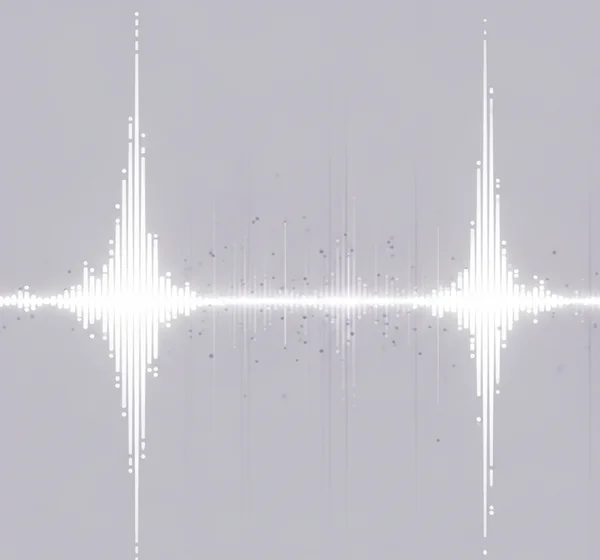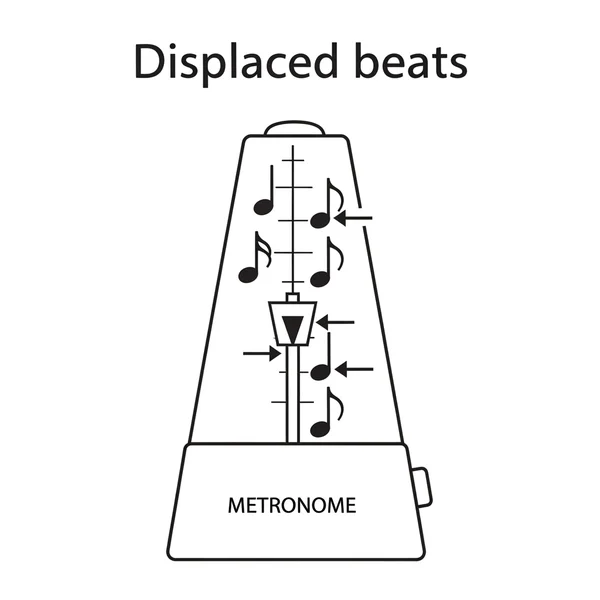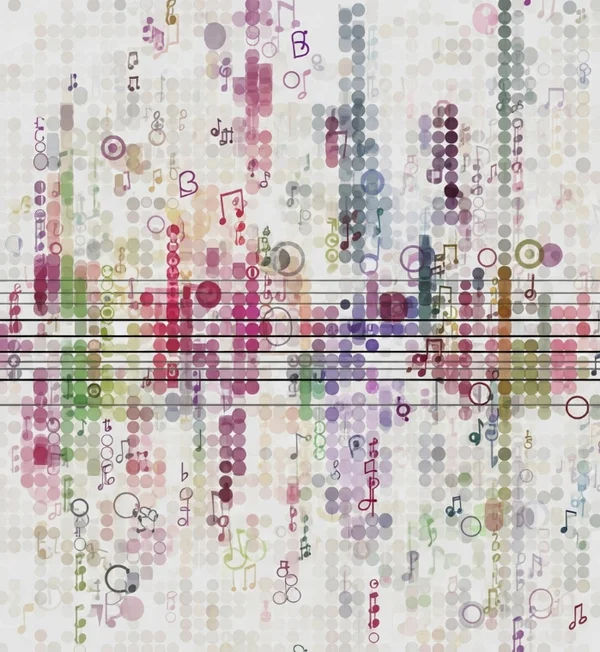Unlock Groove: Advanced Metronome Techniques
Are you ready to take your rhythmic precision to the next level? Many musicians master basic timing with a metronome, but to truly improve groove and musicality, exploring advanced metronome techniques is essential. How can a metronome improve groove beyond simple clicks? This guide dives into two powerful concepts: ghost notes and displaced beats, showing you how to practice them effectively. If you're wondering what are some advanced rhythm techniques?, you've come to the right place. Try our online metronome and start transforming your playing today!
I. Elevate Your Rhythm Beyond Basic Beats
Most musicians use a metronome for fundamental timing. But what about injecting more feel and a deeper sense of groove? This is where standard click practice reaches its limits.
Why Basic Metronome Practice Isn't Enough for Advanced Groove
Simply playing to a click doesn't always create a nuanced rhythmic performance. You might ask, how to achieve better rhythm control for expressive playing?
- The Limits of Standard Click Tracks: Basic clicks keep you in time but don't teach rhythmic placement or dynamic variation for a captivating groove.
- The Quest for Nuance and Feel: True musicality lies in subtle rhythmic details that make music breathe.
What You'll Learn: Ghost Notes, Displaced Beats, and Enhanced Rhythm Control
This article provides a roadmap:
- Ghost Notes Practice: Adding quiet notes that contribute to the feel.
- Displaced Beats: Shifting notes off the main beat for tension and release.
- Achieving enhanced rhythm control for sophisticated performance.
Ready to explore? Our free metronome online is the perfect tool.
II. Mastering Ghost Notes: Adding Subtlety with Your Metronome Online
How to practice ghost notes? Ghost notes add sophistication, and your metronome is key to mastering them.
What Are Ghost Notes? The Secret to a Groovier Sound
These subtle articulations change a rhythm's feel.
-
Defining Ghost Notes: Quiet But Powerful: Played at a lower volume, ghost notes create a percussive effect or rhythmic undercurrent, felt more than heard.
-
Examples of Ghost Notes: Think of subtle snare articulations in funk or muted bassline plucks. These aid groove development.

How to Practice Ghost Notes Effectively with Your Metronome
Effective ghost notes practice needs precision. Can I practice subtle rhythms with an online metronome? Yes!
- Setting Up Your Metronome for Ghost Note Exercises: Use a clear click. You might find subdivisions on a good online metronome tool helpful for precise placement.
- Exercise 1: Isolating Ghost Notes:
- Set your metronome tool to a slow tempo (e.g., 60-80 BPM).
- Play a regular accented note on one beat.
- Play a ghost note on another – aim for barely audible.
- Focus on dynamic difference and accuracy.
- Exercise 2: Integrating Ghost Notes into Rhythms:
- Take a simple rhythm.
- Identify spots for ghost notes.
- Practice slowly with your digital metronome, incorporating ghost notes. Increase tempo gradually.
- Common Mistakes: Playing ghost notes too loudly, inconsistent timing, or losing the main beat. Regular timing exercises are essential.
III. Conquering Displaced Beats: Shifting Your Rhythmic Center with Metronome Precision
What are displaced beats? Displaced beats involve playing notes slightly before or after the main metronome click for a specific rhythmic feel. This is core to advanced rhythm training.
Understanding Displaced Beats: Playing Ahead or Behind the Click
This technique adds a human, flexible quality.
-
Defining Displaced Beats: Intentional Rhythmic Tension: Not mistakes, but deliberate choices to create rhythmic interest. This helps you feel the beat dynamically.
-
Impact of Displaced Beats: Playing ahead creates urgency; playing behind creates a relaxed feel. Mastering this gives control over rhythmic emotion.

Metronome Exercises for Mastering Displaced Beats
Using your metronome as an anchor is crucial for syncopation practice.
- Using Your Metronome as an Anchor: The click from a reliable metronome online is your reference. Consistently place notes in relation to that click.
- Exercise 1: Shifting Accents to Off-Beats:
- Set your metronome.
- Place accents on the "and" of each beat (upbeat).
- Feel the main pulse internally. This is a great metronome exercise for independence.
- Exercise 2: Practicing Syncopation:
- Choose a syncopated rhythm.
- Play slowly with the metronome, noting how notes align with clicks.
- Feel where the rhythm sits relative to the pulse.
- Developing Your Internal Clock: Practice builds an internal sense of time for confident, musical beat displacement.
IV. Integrating Advanced Techniques: Combining Ghost Notes and Displaced Beats for Ultimate Rhythm Control
Once comfortable with individual techniques, combine them for your advanced rhythm training. This is where true rhythm control and groove development shine.
The Synergy of Ghost Notes and Displaced Beats for Enhanced Groove
How to make my playing groove better? Combining these creates a rich, multi-layered rhythmic feel.
-
Creating Complex Rhythmic Textures: Imagine a bassline with ghosted notes and others pushed or pulled against the beat for a dynamic texture.
-
Building a More Sophisticated Rhythmic Vocabulary: These nuances add expression, expanding your musicality.

Practical Metronome Strategies for Combined Practice
Approach with patience.
- Starting Slow: Layering Gradually:
- Begin with a simple pattern and your web metronome at a very slow tempo.
- Add ghost notes until comfortable.
- Experiment with displacing accented notes, maintaining ghost notes.
- Applying to Your Instrument: Apply these to scales, arpeggios, and musical pieces. Record yourself to assess rhythmic precision.
V. Transform Your Playing with Advanced Metronome Skills
Mastering advanced metronome techniques like ghost notes and displaced beats is rewarding. You'll move beyond playing "in time" to shaping rhythm for expressive performances.
Key Takeaways
- Ghost notes add subtle layers enhancing groove.
- Displaced beats create rhythmic tension and feel.
- Consistent practice with a tool like a precise online metronome is crucial for rhythm control.
Your Next Steps: Consistent Practice
Regular, deliberate music practice is key. Use a good online metronome to structure your metronome exercises.
VI. Your Questions on Advanced Metronome Techniques Answered
Common questions about these rhythmic concepts:
-
How long to master ghost notes with a metronome?
Varies by skill and practice. Focus on gradual improvement. Daily practice with a tool like a simple metronome online yields results.
-
Can I practice displaced beats on any instrument?
Yes! Applicable to drums, bass, guitar, piano, and vocals. The principles of timing exercises are universal.
-
Best BPM to start advanced techniques?
Start very slow (50-70 BPM) for ghost notes practice or displaced beats. This allows your brain to process. Gradually increase speed using your favorite online metronome.
-
Does MetronomeOnline.org have specific features?
Our free web metronome provides clear clicks, adjustable tempo, and time signatures. The real "feature" is your focused attention. Its simplicity aids concentration. Subdivisions can help visualize note placements.
-
Famous musicians known for these techniques?
Many! Funk drummers (Clyde Stubblefield), bassists (James Jamerson), and jazz musicians often use these. Exploring their work inspires your groove development.